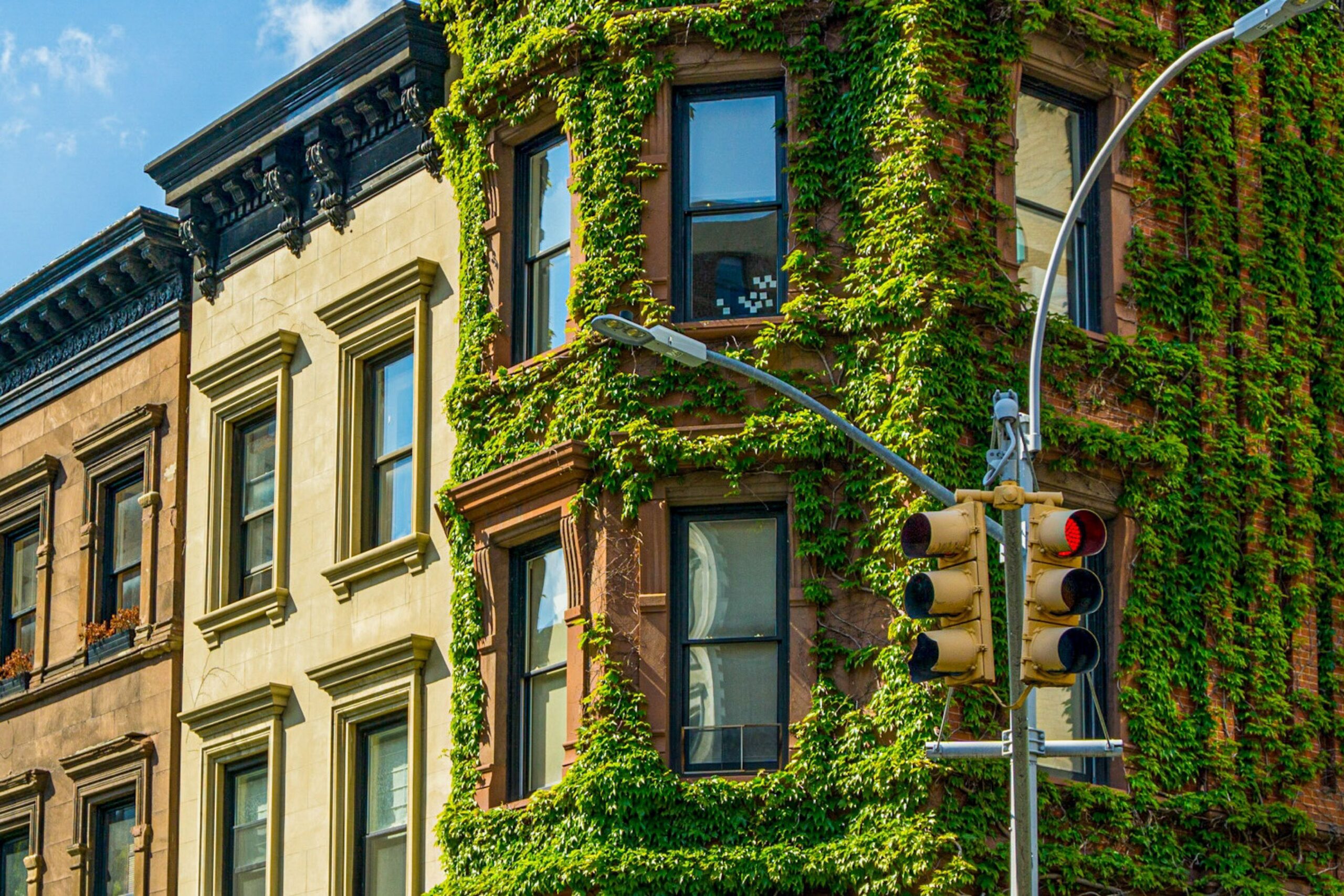Plants that grow in full shade provide an invaluable service to the environment. Did you know that they are responsible for absorbing over one trillion tons of carbon dioxide each year? This means that plants can be a major contributor to reducing climate change. With this in mind, it is essential to understand which plants thrive in the shade, so we can all do our part in helping the environment.
As a specialist botanist and gardener, I have had years of experience tending to plants that grow in full shade. When properly cared for, these plants can help create a lush garden atmosphere even in areas with limited sunlight. In this article, I will discuss some of my favorite varieties that are sure to thrive no matter what level of shade your garden receives.
By exploring the different types of plants available, as well as providing helpful tips on how best to care for them, I hope to inspire you to create vibrant and healthy gardens filled with beautiful blooms! With so many options available, there is sure to be something perfect for your individual needs and preferences. So let’s get started on discovering some of the most amazing plants that will transform any shady garden into a delightful oasis!
What Is Full Shade?
Full shade is an important factor in many garden and plant designs. Did you know that approximately 90 percent of all plants need some amount of light to survive, thrive, and grow? That’s why it is so important to understand what full shade means and how to use it for your gardening needs.
Full shade is defined as a location that receives less than three hours of direct sunlight per day. This can be due to trees or buildings blocking the sun, or any location that has little access to natural sun exposure throughout the day. There are actually quite a few plants that will grow in these conditions; they just have different requirements than those grown in sunny locations.
The good news is that there are plenty of plants available for the full-shade gardener. Many perennials, like hellebores and ferns, can handle this type of location without issue; annuals like begonias and impatiens also thrive in shaded environments. Additionally, there are also many ornamental grasses and shrubs that do well in areas with limited sunlight. With a bit of creativity and knowledge about which plants are best suited for this type of environment, you can create stunning displays even if you don’t have much direct sunlight available.
Benefits Of Planting In Full Shade
Planting in full shade offers many advantages to gardeners and landscapers. Not only does it create a lush, vibrant space with minimal sunlight, but the plants that flourish in these areas are often drought-tolerant and disease-resistant. That said, the benefits of planting in full shade can be quite diverse.
First and foremost, plants that thrive in full shade are able to withstand long periods of time without direct sunlight. This means that they require less maintenance than those grown in direct sunlight, which often need to be watered or fertilized more frequently. Additionally, because these plants are accustomed to living in low light conditions, they typically require less trimming and pruning than their sun-loving counterparts.
Another major benefit is that many of these plants are highly ornamental—providing a splash of beauty and color even when the sun isn’t shining brightly. They come in a wide range of varieties—including both flowering and foliage types—giving gardeners ample opportunity to create unique displays that will add interest to any outdoor space. Plus, since they’re adapted to living without much sunshine they’re incredibly hardy; able to bounce back quickly from harsh weather conditions or accidental damage.
These benefits make full shade an attractive option for gardeners looking for low-maintenance plants that still offer plenty of visual appeal. With careful selection and proper care, you can easily create a lush garden oasis that will provide beauty year-round – regardless of the amount of sunshine outside!
Plant Varieties That Thrive In Full Shade
The sheer abundance of plant varieties that thrive in full shade can be a bit overwhelming. As an experienced botanist and gardener, I’m here to help you decipher which plants will do best in your space.
First, it’s important to recognize that many plants are perfectly suited for full shade. Hostas, astilbes, and heucheras all make great choices because they require minimal sunlight and often boast stunning foliage. Shade-tolerant ferns such as Japanese painted ferns are also excellent options for adding texture and color to the garden. If you’re looking for something with more of a “wow” factor, consider planting some foxgloves or daylilies – both of which love the shade and provide an eye-catching display when in bloom.
Finally, there are numerous shrubs and trees that can thrive in the darkness of a full shade area. Rhododendrons and hollies are two popular choices for gardens with little sun exposure; however, if you prefer something more unique, look into evergreens like yews or Japanese maples. All of these plants offer beautiful blooms and foliage throughout the seasons, making them perfect additions to any shady spot in your landscape.
No matter what type of plant you’re looking for, there is sure to be one that will thrive in your garden’s full shade environment! From colorful blooms to vibrant foliage, there is no shortage of options when it comes to choosing plants that will thrive in this setting. Next up: ferns – let’s explore how these ancient beauties can add a special touch to your garden!
Ferns
As an allegory, the fern is a symbol of life itself. It can grow in the shadows and thrive despite the lack of sunlight. It stands as a testament to our own resilience and determination when faced with adversity. As gardeners, it is our duty to identify which ferns are best suited for full shade environments and how we can help them flourish in these conditions.
Fortunately, there are many varieties of ferns that do well in full shade settings. The holly fern (Cyrtomium falcatum) is a great option due to its glossy texture and ability to withstand dry climates while still maintaining its evergreen foliage. The leather-leaf fern (Rumohra adiantiformis) is another popular choice due to its airy fronds and bright green leaves; it’s an excellent addition to any shady area.
Whatever species you choose, make sure you have adequate soil drainage and water your plants regularly if they’re planted in containers. With proper care and maintenance, your shady garden will be filled with lush, vibrant foliage for years to come!
Hostas
Not just any plant, hostas bring a unique kind of beauty to the shade garden. They provide lush foliage and exquisite blooms that allow for a peaceful place to relax and enjoy in the summer. For those who are looking for something special in their shady areas, these plants are ideal.
Hostas are low-maintenance and will come back year after year with minimal care. They can tolerate a wide range of soil types, from acidic to alkaline and everything in between. They also appreciate moisture but are not overly demanding in this regard. It is important to note that they prefer nutrient-rich soil and regular fertilization, however, as this helps them grow and thrive.
When it comes to blooming, hostas generally bloom from mid-summer through early fall with shades of white, yellow or lavender flowers. The foliage is also stunning adding texture with its thick leaves that may be variegated or solid green. This makes them an excellent choice for ground covers or mass plantings in a shady area where other plants may struggle to survive. Hostas add color and texture to an otherwise dull landscape while providing an area perfect for relaxation and enjoyment.
Astilbes
Astilbes are a great addition to any garden, especially for those looking for lots of color and texture in the shade. Not only do astilbes provide bright blooms, but they also add an interesting texture to the landscape. In fact, research indicates that over 180 species of astilbe exist, making it one of the most diverse plant varieties available.
As a specialist in botany and gardening, I’m always amazed at how much beauty these vibrant plants can bring to any outdoor space. Astilbes have delicate fern-like foliage and come in many colors such as white, pink, purple, and red. They bloom from mid-summer to fall and attract pollinators such as bees and butterflies with their sweet nectar. Plus, they’re incredibly low maintenance—just a little pruning and some occasional watering during dry spells is all they need.
These beautiful flowers are perfect for adding contrast and balance to dark areas of your garden or landscaping project. Just be sure to give them well-draining soil that’s high in organic matter and don’t forget to mulch around the base of the plant to keep the roots cool throughout summer months. With proper care, you’ll be rewarded with an eye-catching display that’s sure to draw plenty of attention from visitors.
Leafy Begonias
Is it possible to have a luscious garden in full shade? The answer is yes! Leafy begonias are an ideal choice for areas with little or no direct sunlight. A specialist in botany and gardening, I can confirm that these hardy plants make a stunning addition to any garden.
Leafy begonias require minimal maintenance and can be grown from cuttings. They thrive in moist soil, so they should be watered regularly but not over-watered. In return for your care and attention, leafy begonias will reward you with beautiful leaves that come in different colors and shapes.
These versatile plants also provide color throughout the year as they bloom in white, pink, red or yellow flowers. Their large glossy leaves look great when planted alongside other shade-loving plants like hostas or ferns. With the right combination of foliage, leafy begonias can transform your shady spot into a paradise!
Impatiens
Let us explore the beauty of the eighth plant on our list – Impatiens. This vibrant and colorful flower with its exotic petals can be a perfect addition to your garden. But what sets it apart from other plants?
For starters, impatiens are known for their ability to thrive in full shade environments. Whether you have a dark corner in your garden or an area that gets minimal sunlight, this plant can provide a splash of color without needing direct sunlight. This makes them an excellent choice for those looking to add some life to their shady areas.
In addition to its ability to grow in the shade, impatiens also come with a variety of benefits. To begin with, they require very little maintenance and will last for years with occasional watering and pruning. Furthermore, they are easy to propagate as well – simply take a cutting from a healthy stem and you’ll be able to start your own impatiens patch in no time! They also attract beneficial insects like ladybugs which help keep pests at bay while also providing gorgeous blooms all season long.
Impatiens are truly an amazing addition to any garden or outdoor space and provide plenty of beauty even in the darkest of locations. With their low-maintenance requirements and stunning colors, there’s no doubt that these plants will add life and vibrancy where ever you choose to place them. Now let us move on to explore Heucheras – another wonderful shade-loving option!
Heucheras
Heucheras, also referred to as coral bells, are an ideal choice for shady gardens. They come in so many colors, textures, and sizes that there’s something for everyone. They’re incredibly hardy and thrive even in the most difficult of conditions.
Heucheras have a wide range of foliage options – from deep reds and purples to bright yellows and greens – making them a great choice for adding texture and contrast to a shady garden. Their delicate flowers can be quite eye-catching too! Plus, heucheras are easy to care for and don’t require much maintenance.
These plants are perfect for anyone looking for a low-maintenance species with lots of color options. Heucheras will provide you with beauty all season long without taking up much space or requiring too much effort on your part. With their stunning foliage and vibrant flowers, they’re sure to add some life to any shade garden! With that said, let’s move on to the next plant: bleeding hearts.
Bleeding Hearts
The Bleeding Heart is a true masterpiece of nature, a flower so beautiful it could make the heavens cry! It’s a shade-loving plant that can add an exquisite charm to any garden. Here are just three of the many reasons why you should consider planting a bleeding heart in your garden:
- Its vibrant and charming pink blooms that gracefully hang from its stems create an eye-catching display.
- It has attractive foliage that provides year-round interest in the garden, even in winter when other plants may be dormant.
- It’s easy to grow and requires minimal care, making it an excellent choice for novice gardeners or those with busy lifestyles.
As a specialist in botany and gardening, I am passionate about helping others cultivate stunning gardens that bring joy and satisfaction to their lives and those around them. The Bleeding Heart is one of the best plants to achieve this goal since it is relatively low maintenance while adding beauty to any area of your garden. Planting this shade-loving perennial will not only bring you pleasure but also help create wonderful memories that will last a lifetime!
From its gorgeous blossoms to its easy care requirements, the Bleeding Heart is an excellent addition to any garden looking for color and vibrancy even in shady areas. Now let’s move on to exploring other options such as shade-loving grasses!
Shade-Loving Grasses
The world of plants is full of surprises. From deep greens to vibrant purples and reds, they come in all shapes and sizes, with a wide range of needs. One of the most fascinating types are the shade-loving grasses that can thrive even when deprived of direct sunlight.
These plants often have unique characteristics that allow them to survive in low light conditions. For example, many species have thinner leaves than those seen in other grasses; this allows them to still receive enough indirect light for photosynthesis. In addition, some shade-loving grasses are able to spread more slowly, so as not to compete with other plants for resources.
Lastly, these types of grasses tend to be incredibly hardy and resilient, making them perfect for areas where sun exposure is limited or nonexistent. From Japanese forestgrass to lilyturf and monkey grass, there’s something for all kinds of gardens – no matter how much (or little) sun you get!
Japanese Forestgrass
Are you looking for a stunning addition to your shady garden? Japanese forestgrass may be the answer. This beautiful grass is an excellent choice for gardeners wanting to bring a touch of drama and texture to their space. It thrives in full shade and offers a unique look without needing a lot of maintenance.
Japanese forestgrass, also known as Hakonechloa macra, is native to Japan and has long, arching strands that grow up to three feet in length. Its variegated foliage comes in shades of yellow, green and cream, giving it an extra layer of depth. The grass is low-growing and creates a carpet-like effect when planted densely together. It’s perfect for adding height, texture and movement to any garden bed or even containers where it can cascade over the sides.
Though Japanese forestgrass prefers moist soil and partial shade, it can thrive in full shade as well with minimal care required. It’s drought tolerant once established, but will need regular watering during its first year or two until it’s fully established. Pruning dead leaves or stems back helps keep it tidy throughout the season and encourages new growth for additional texture and color.
Japanese forestgrass helps add dimension to any shady spot in your garden while remaining easy going enough that even novice gardeners can enjoy its beauty with minimal effort!
Care For Shade Plants
When it comes to caring for shade plants, there are a few key points to keep in mind. First and foremost, it’s important to remember that plants grown in full or partial shade will require less water than their sun-loving counterparts. This means they should be watered less frequently and with smaller amounts of water. Additionally, soil should be kept at an even moisture level rather than allowing it to dry out completely between waterings.
It’s also important to provide adequate nutrition when caring for shade plants. Fertilizer can help promote healthy growth and bloom production, but be sure not to over-fertilize as this could lead to unhealthy foliage or root burn. Additionally, adding organic matter such as compost or mulch can help provide essential nutrients while also helping retain moisture in the soil. Here are a few things you can do:
• Feed regularly: Feed your plants every couple of weeks using a balanced fertilizer specifically formulated for foliage plants and shrubs.
• Mulch judiciously: Mulching helps maintain soil temperature and moisture levels, but too much may cause rot. Avoid piling mulch up against the stems of your plants as this could encourage disease or insect infestations.
• Prune carefully: Pruning is essential for promoting healthy growth and blooming throughout the growing season, but be sure not to prune too severely as this could damage the plant or cause it to become spindly or leggy. Prune only dead, diseased, or damaged branches back to healthy growth points and leave healthy branches alone.
These simple tips can help you care for shade plants properly so that they stay healthy and look their best all season long! Knowing how much water, fertilizer, mulch and pruning is needed will ensure that your shade garden becomes a lush oasis of beauty year after year. With proper care and maintenance you’ll soon have a stunning landscape that everyone will envy!
Mulching For Shade Plants
When it comes to growing shade plants, mulching is one of the most important steps. This layer of organic material helps maintain soil moisture, regulate soil temperature, and promote a healthy root system for your shade plants. It also prevents weeds from germinating and reduces water evaporation from the surface of the soil.
Mulch should be spread around your shade plants in a 2-3 inch layer, covering an area about twice as wide as the plant’s canopy. The choice of mulch will depend on what’s available and which type best suits the needs of your particular plants. Options include wood chips, compost, pine needles, and shredded bark. Make sure that you select a type that is free from weed seeds or disease spores.
It’s also important to keep in mind that too much mulch can cause problems such as root rot or fungal growth. So be careful not to overdo it! With these tips in mind, you’ll have no trouble creating an ideal environment for your shade plants to flourish. As you move forward with caring for your shade plants, it’s also important to be aware of common mistakes when planting in full shade.
Common Mistakes When Planting In Full Shade
Planting in full shade can be a tricky endeavor. Take the case of Sarah, who planted a variety of shade-loving plants in her backyard. She did everything right—mulching, watering, and providing ideal soil conditions—but still experienced lackluster results. What went wrong?
The most common mistake when planting in full shade is assuming that all plants need the same amount of sunlight and water. In fact, some varieties will do best with only a few hours of sun per day and may not require much supplemental water at all. Additionally, certain types of plants may require more time to acclimate to their new environment before they’re ready to thrive.
Botanists and gardeners must also take into consideration the type of soil present in the area being planted in full shade. Soils that are too sandy or clay-like can affect how well certain plants will grow, so it’s important to ensure that the soil is balanced for optimal growth. Additionally, gardeners should consider if there are any pests present which might hinder plant growth or need special treatments to control them.
Understanding the nuances of different types of shade-loving plants can make all the difference when it comes to successful gardening projects in full shade areas. Thorough research on a particular plant’s requirements beforehand can save both time and money while ensuring healthy growth for years to come!
Frequently Asked Questions
How Often Should I Water Plants That Grow In Full Shade?
When it comes to plants that grow in full shade, knowing how often to water them is essential. It’s important to understand the needs of different plants when providing moisture, as too much or too little can be detrimental. As a specialist in botany and gardening, I would like to provide some guidance on how often you should water your shade-loving plants.
The frequency of watering depends on the specific plant species and its growing conditions. Generally speaking, most shade-loving plants require less water than those that grow in direct sunlight. However, this does not mean that all shade-loving plants need to be watered less frequently – some may even require more frequent watering if they are growing in dry soil.
In order to determine the ideal watering schedule for your particular shade-loving plants, it’s important to observe them closely and pay attention to their growth patterns. If you notice that the leaves are beginning to wilt or curl up, this could be an indication that your plant needs more water than usual. On the other hand, if the leaves start turning yellow or brown, it may mean that you are overwatering your plant. Once you’ve established a regular watering schedule that works best for your particular situation, stick with it – consistency is key!
By following these tips and giving your shade-loving plants their proper care and attention, they will thrive and reward you with beautiful blooms all season long!
Is It Possible To Grow Vegetables In Full Shade?
Yes, it is possible to grow vegetables in full shade. The key is to select the right varieties and be mindful of their particular characteristics. Shade-tolerant plants often have very different requirements than those grown in sunny locations. First, soils need to remain moist but not wet; this means that a regular watering schedule must be followed to prevent the roots from drying out. Second, it’s important to understand which vegetables will thrive in shade environments; some of the most popular include lettuce, kale, spinach, arugula and Swiss chard.
It is also important to note that not all types of vegetables can be grown in full shade; for example, tomatoes and peppers require more sunlight than what a shady environment can provide. However, there are still many options for those looking for a vegetable garden even when light levels are low. Carrots and turnips do well in partial shade, as do herbs such as parsley, basil and oregano. Finally, leafy greens such as collards and mustard greens can also be grown successfully in partial or full shade conditions.
In order to create an optimal environment for growing vegetables in full shade, careful consideration needs to be given to soil preparation and watering practices. Mulch should be used around plants to help retain moisture levels and keep weeds at bay. Additionally, water should be applied deeply but infrequently; this ensures that the roots stay hydrated while avoiding any potential damage caused by over-watering. With these tips in mind you can enjoy a productive harvest even when there’s limited access to direct sunlight!
Can I Combine Different Shade-Loving Plants In One Planter?
Combining shade-loving plants in one planter is an option for gardeners who want to make their outdoor space look lush and inviting. With careful planning, you can create a planter that showcases several different plants without compromising the health of any one species.
As a specialist in botany and gardening, I recommend considering these five tips when combining different shade-loving plants in one planter: • Select varieties that require similar soil conditions • Choose plants with similar water needs • Make sure each plant has enough room to grow • Use companion planting principles to choose complementary species • Regularly monitor the health of all the plants
With thoughtful selection and placement of shade-loving plants, you can create a vibrant planter that will add beauty to your outdoor space for years to come. A successful combination of shade-loving plants requires research, knowledge and observation. Take the time to understand each plant’s individual needs before deciding which species are best suited for your planter. The result will be a unique display of color and texture that will bring life to your outdoor area.
Are There Any Special Fertilizers For Plants That Grow In Full Shade?
When planting in full shade, it’s important to use the right fertilizer for your plants. Not all fertilizers are created equal; some are specifically formulated for full-shade plants. Fertilizers formulated for full shade will be lower in nitrogen, as nitrogen encourages leaf growth and can cause the leaves of shade-loving plants to burn in direct sunlight. To promote lush, healthy foliage, look for a fertilizer that contains phosphorus and potassium, as well as trace elements such as magnesium and zinc.
It’s also important to consider the soil pH when selecting a fertilizer. Soils with a low pH level require more acidic fertilizers while soils with higher pH levels need more alkaline fertilizers. Adding organic matter to your soil can also help balance out its pH level and provide essential nutrients. Compost and manure are great additions that will help your shade-loving plants thrive.
If you’re not sure what kind of fertilizer is best for your particular situation, consult an experienced gardener or horticulturist who can recommend specific products tailored to your needs. With the right care and attention, you can ensure that your shade-loving plants remain healthy and beautiful all season long!
How Can I Tell If A Plant Needs More Or Less Shade?
When deciding which plants should be placed in full shade, it is important to understand how much shade a particular plant requires. Plants that are placed in too little or too much shade can suffer from stress and stunted growth. As a specialist in botany and gardening, I know that understanding the amount of light each plant needs is key to its success.
Imagery can help illustrate this concept – think of the sun as an artist’s brush, painting shadows on the garden canvas. Some plants need only a few strokes of light while others require more, depending on their natural environment. Knowing how much shadow you are providing your plants is essential for their survival and growth.
To determine the amount of shade a plant needs, observe its leaves and stems. If the leaves are dark green with no discoloration or wilting then the plant can handle more sunlight; if they are lighter green with signs of wilting then it could use less sun exposure. Also look at the stems – if they appear thin and weak then more shade may be needed; if they appear strong and sturdy then it may tolerate more direct sunlight. With this knowledge in hand, you can provide just the right amount of sunshine for every plant in your garden!
Conclusion
In conclusion, plants that grow in full shade are a wonderful way to spruce up any shady area. With the right combination of water, fertilizer and sunlight, you can create a lush oasis of greenery even in the darkest corners of your garden. With a little bit of patience and care, you can bring life and beauty to those difficult-to-reach places.
The key to success lies in understanding the specific needs of each plant. Paying attention to how much sun or shade each one requires will help ensure they thrive. When done correctly, you will be rewarded with a magical garden that blooms with color and beauty all season long. This is truly an enchanting experience that will leave you feeling captivated by nature’s glory.
For those who want to add some life to their shaded areas, there are many options for plants that grow in full shade. From vegetables to flowers and everything in between, the possibilities are endless! So don’t let the lack of sunlight stop you from creating your own backyard paradise; with just a bit of knowledge and effort, it can be yours for the taking – like chasing after a rainbow!





























